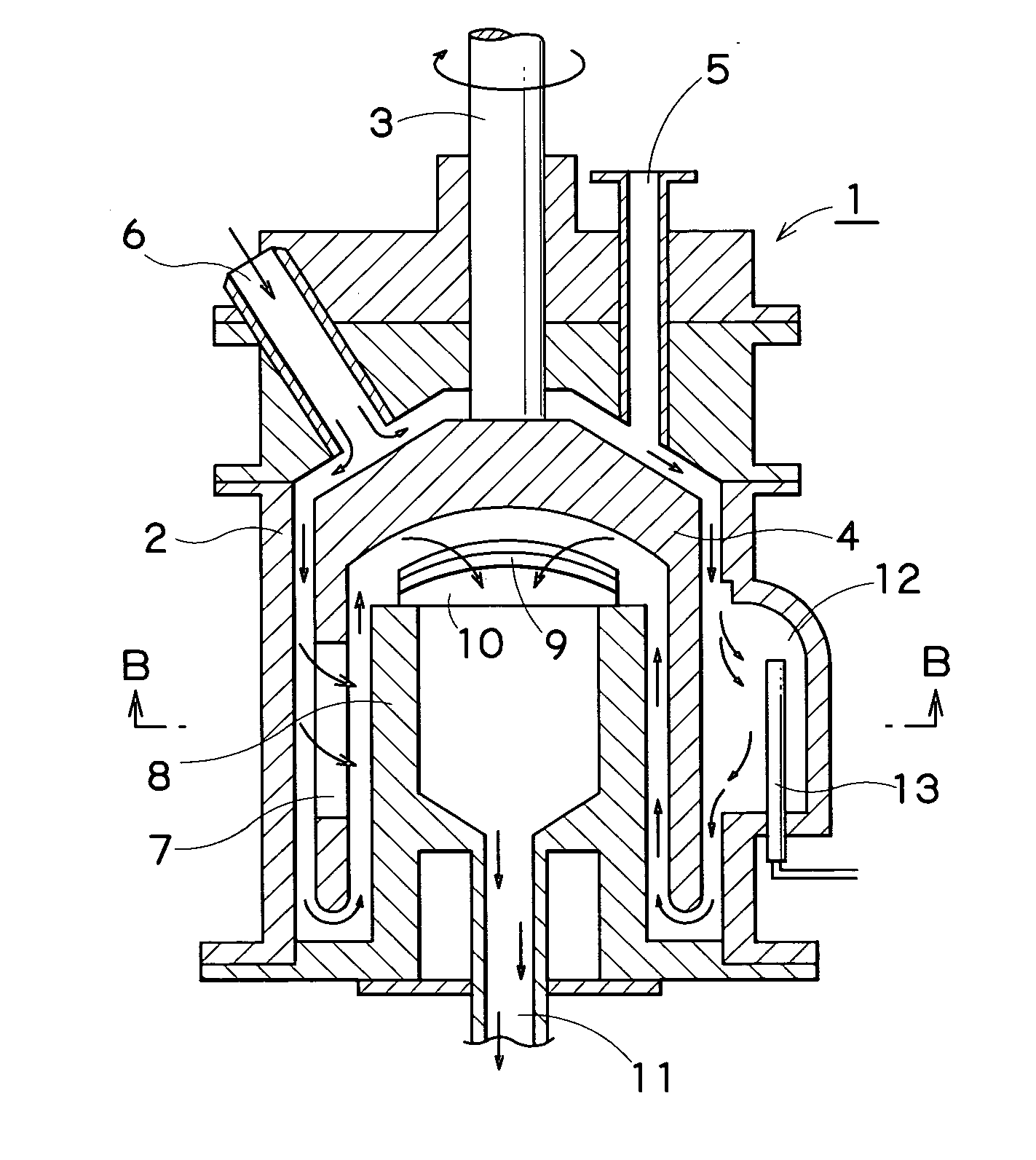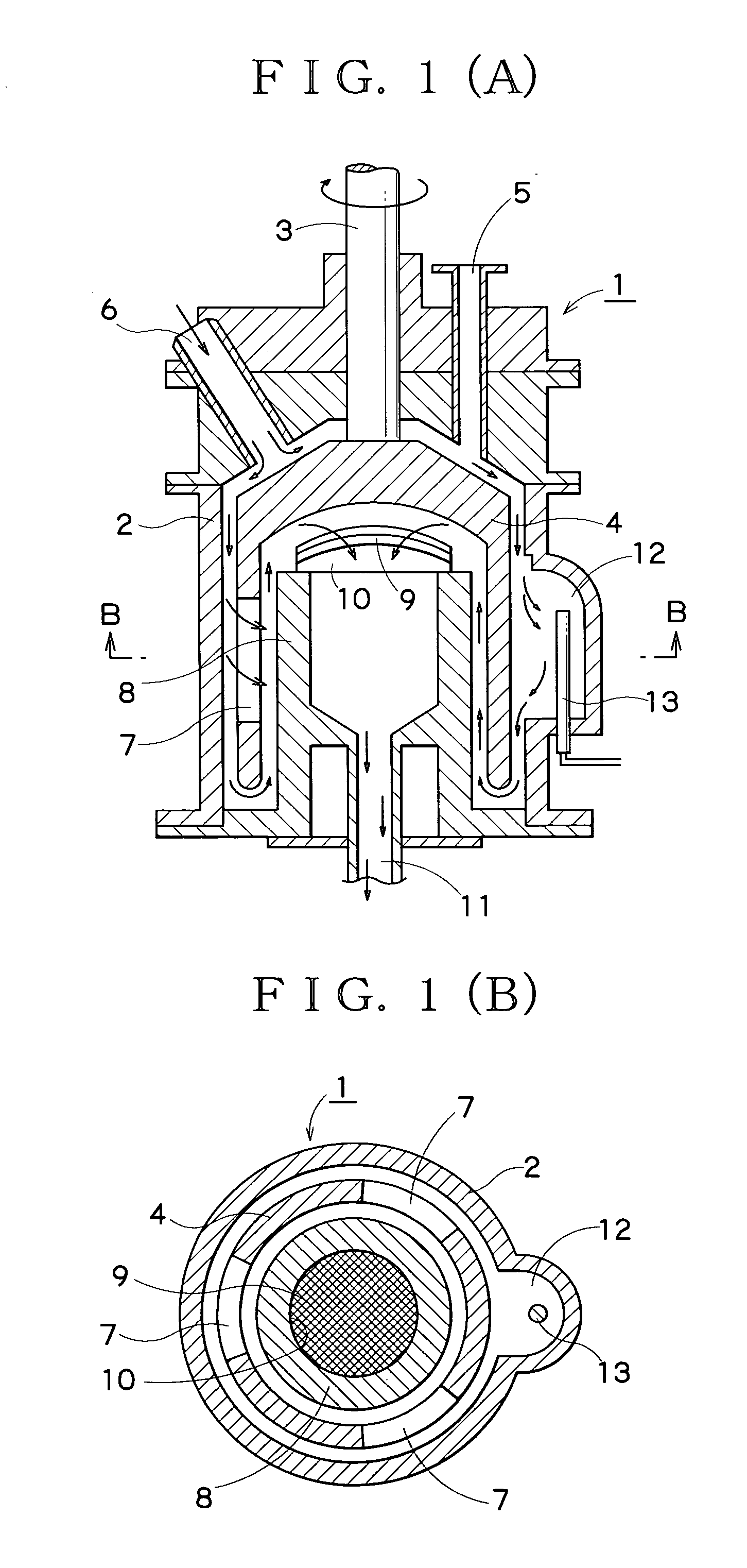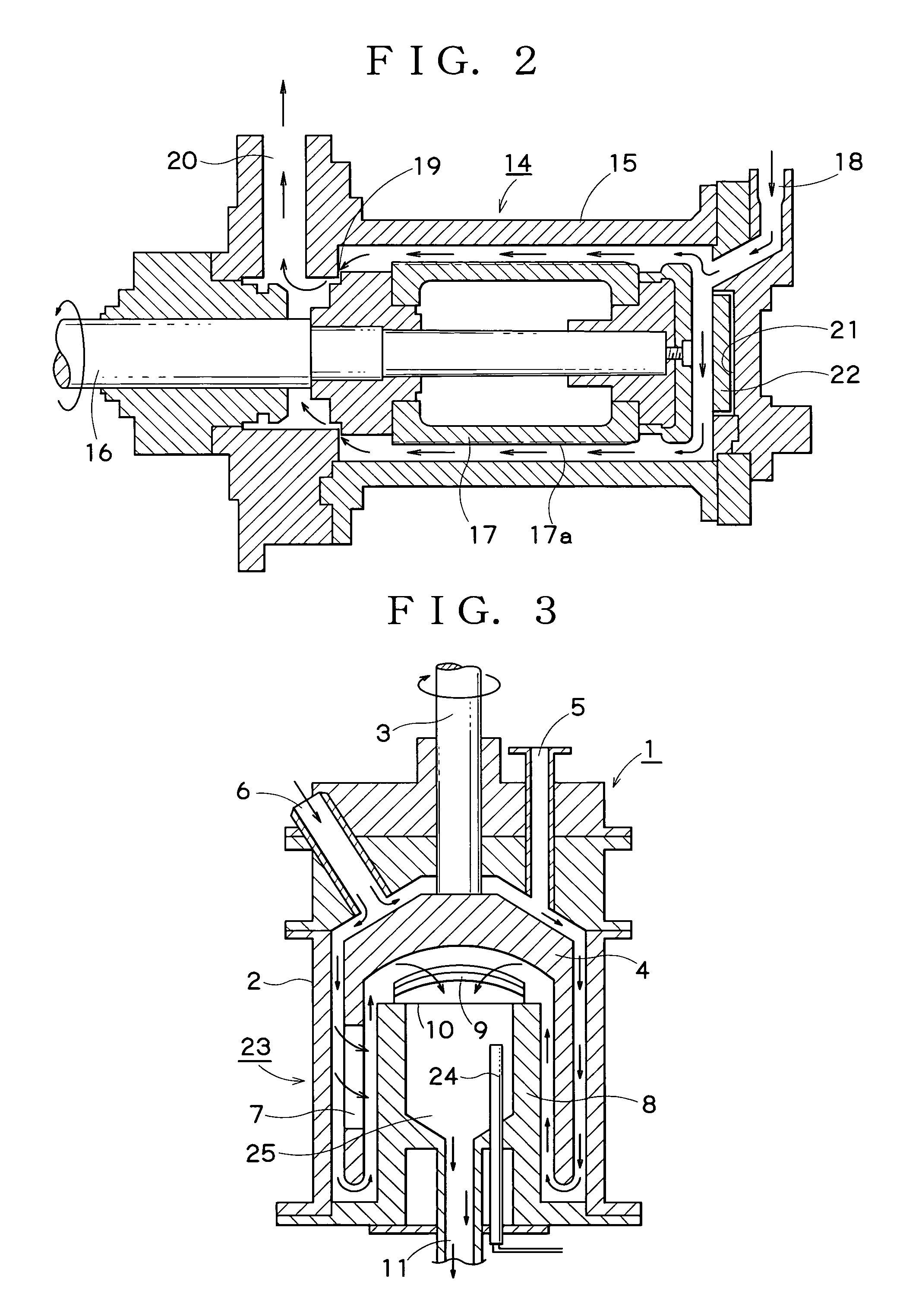Dispersing or milling apparatus, and dispersing or milling method using same
a technology of dispersing or milling and dispersing or milling method, which is applied in the direction of gas current separation, application, grain treatment, etc., can solve the problems of violent collapse of small vacuum bubbles, and achieve the effects of large cavitation, strong shearing force, and acceleration of movemen
- Summary
- Abstract
- Description
- Claims
- Application Information
AI Technical Summary
Benefits of technology
Problems solved by technology
Method used
Image
Examples
example 1
[0051]An apparatus as shown in FIG. 1(A) was used wherein a pocket is formed at a part of a vessel of system A and a horn-type ultrasonic generator was disposed inside the pocket. More specifically, a protruding portion 12 was formed on an inner wall of a vessel 2, and an ultrasonic horn 13 as an ultrasonic-generating device was disposed in the protruding portion 12. The ultrasonic waves had an amplitude of 50 μm and a frequency of 20 KHz. The bead mill was operated at a circumferential speed of 4 m / s and a slurry-supplying rate of 10 mL / s for treatment. An aqueous slurry obtained by adding 10 vol % of P25 powder, i.e., nanoparticulate P25 (Nippon Aerosil Co., Ltd., Tokyo, Japan) with a primary particle size of 35 nm made of titanium oxide nano particles and, as a polymer dispersing agent, polyacrylic acid ammonium salt with a molecular weight of 8,000 added in an amount of 0.5 mg / m2 per surface area of particles, was pre-treated for 30 minutes by using rotating vanes at 500 rpm. Us...
example 2
[0052]An apparatus as shown in the FIG. 2 of system B was used. Specifically, a slurry flows from the forward end side of a vessel to a rotor contrary to the slurry flow direction in system A. The experiment of dispersion was conducted in the same manner as in Example 1 using a loading-type ultrasonic generator disposed in a space formed on a side opposite to the forward end of the rotor. Particle sizes measured every hour for 5 hours are indicated in Table 1.
example 3
[0053]An apparatus of system C as shown in FIG. 3 was used. Specifically, a horn-type ultrasonic generator was disposed in a space inside the stator where the slurry accumulates after passing through a screen and before reaching a discharge port. Other than this feature, the same experiment of dispersion as in Example 1 was conducted. Particle sizes, measured hourly for 5 hours, are indicated in Table 1.
PUM
| Property | Measurement | Unit |
|---|---|---|
| size | aaaaa | aaaaa |
| particle size | aaaaa | aaaaa |
| particle size | aaaaa | aaaaa |
Abstract
Description
Claims
Application Information
 Login to View More
Login to View More - R&D
- Intellectual Property
- Life Sciences
- Materials
- Tech Scout
- Unparalleled Data Quality
- Higher Quality Content
- 60% Fewer Hallucinations
Browse by: Latest US Patents, China's latest patents, Technical Efficacy Thesaurus, Application Domain, Technology Topic, Popular Technical Reports.
© 2025 PatSnap. All rights reserved.Legal|Privacy policy|Modern Slavery Act Transparency Statement|Sitemap|About US| Contact US: help@patsnap.com



